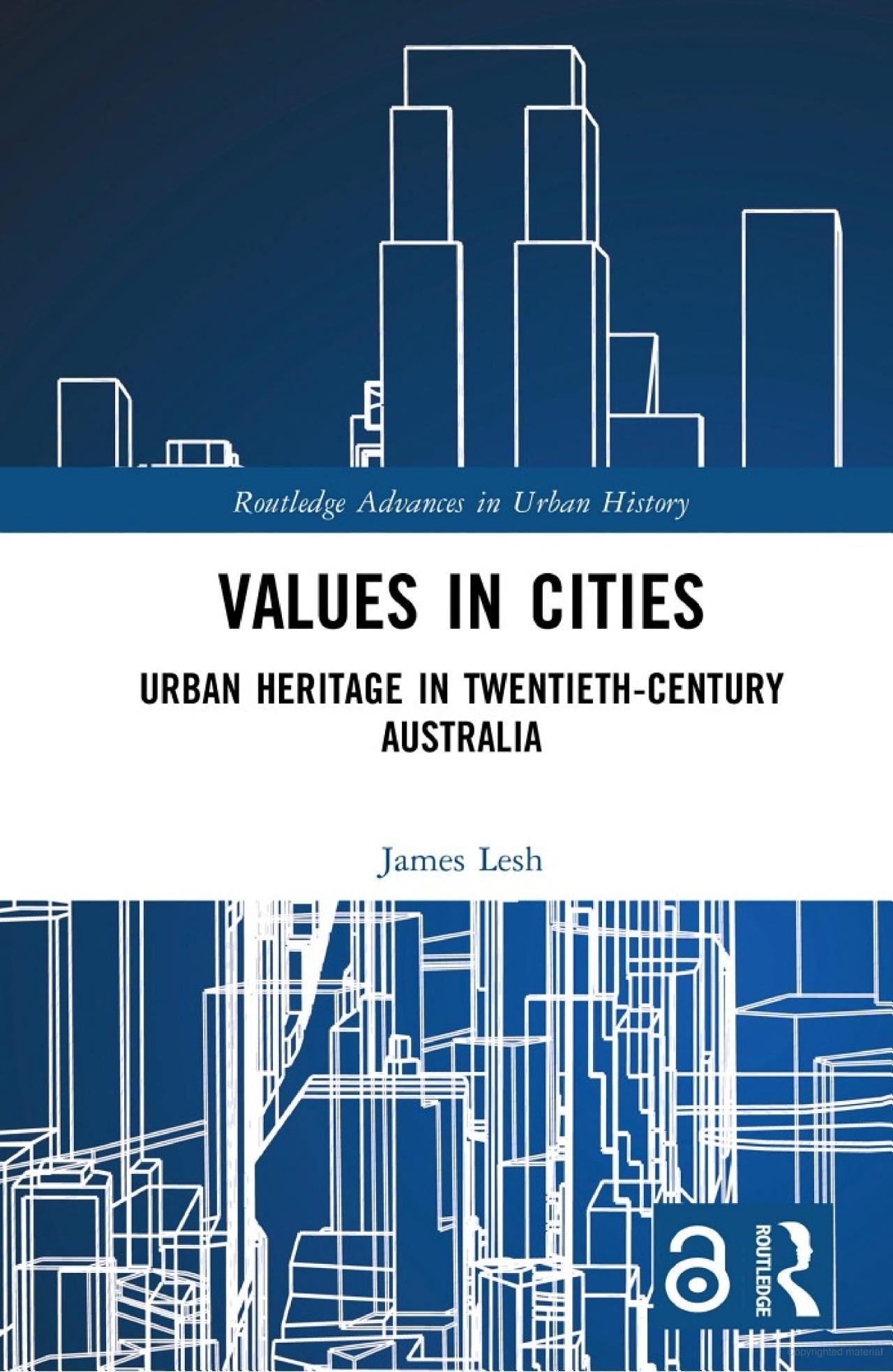Values in Cities: Urban Heritage in Twentieth-Century Australia
Values in Cities provides a historical treatment of heritage – as a discourse, a field of practice, a system – across the twentieth century in Australia. The book is an enjoyable and refreshing read. Its narrative is rich with interesting examples that bring Lesh’s analysis within mind’s reach.
READ REVIEW
↓
Values in Cities: Urban Heritage in Twentieth-Century Australia
JAMES LESH | 2023
Lesh weaves together many strands. He illustrates ideas about city improvement and the emergence of planning as a discipline. In parallel, he demonstrates the crystallisation of early approaches to heritage recognition, protection and conservation. Then he traces the relationship of all these threads over the twentieth century. He shows the influence of European thinking about heritage, heavily freighted by the impacts of the two world wars on European cities, as a galvanising force, but one that remained at a remove from the Australian context. He explains the shifting relationships between the players in the Australian scene – the National Trust, ICOMOS, state and commonwealth governments, communities and practitioners of the emerging heritage professions.
Lesh’s focus is on capital cities: Sydney, Melbourne and Hobart in particular, but with Adelaide, Perth and Brisbane providing instructive contrasts. The focus on cities is framed by the two ends of the book, where he explicitly considers the distinctiveness of Australian cities and their heritage: cities combine an intensity of competition over space, relatively large populations with strong opinions about change and concentrations of iconic structures. In the early-to-mid twentieth century, they were places that had formed the bridgeheads of colonial activity, many of the remnants featuring fashionable Georgian architecture coming under pressure from proposals for new development that reached a new pitch of activity with the post-war boom. Lesh then comes to the renewed intensification of post-modern change currently facing Australian cities, and offers a constructive analysis of heritage systems and practice in this context.
Lesh effectively links a strong identification of heritage into and beyond the mid-twentieth century with the landmarks of a triumphalist narrative of colonial establishment and progress. This was accompanied by the erasure of the presence, actions and values of Aboriginal peoples from the landscape and from historical narratives. Landmarks and structures of note were the surviving remains of colonial institutions such as those lining Macquarie Street in Sydney: outposts of civilisation. This line of argument is hardly surprising in the context of contemporary history-making; many of us have called out the ‘lateness’ of the required recognition of First Nations’ history. Having established this connection though, Lesh calls on the reader to consider the prolonged and multi-layered disjunction between the recognition of Aboriginal cultural values in the landscape and Australian heritage systems. His fresh inflection should cause us all to reflect on these issues.
Lesh also holds up a mirror to heritage values. He illustrates a move away from the presumption that these values were self-evident and intrinsic parts of the built environment – in the early-to-mid twentieth-century most often associated with architectural merit and (usually) official history. As a range of values was articulated from the 1970s and 1980s, he posits that it became clearer to practitioners that these values were socially and culturally defined, could be understood from different perspectives, and would change over time. By defining these values, heritage thinking expanded to take in social importance and a broader view of history, but had the associated effect of shifting competence and decision-making to professionals and away from communities. As Lesh puts it, across the twentieth century ‘conservation…underwent a transformation in purpose: from protecting valuable places to protecting the values of places. The effect was to centralise the judgement of the heritage practitioner, which had the consequence of diminishing community perspectives.’
Lesh calls on his readers to think about where we’re going next with heritage conservation, as the challenges of the next decades start to come into focus. How will we position heritage practice in relation to the further intensification of our cities, the impacts of climate change, and the diverse values of communities? How will we prioritise some values over others? How consciously will we do so?
Values in Cities is published by Routledge.
Reviewer: Emma Dortins, PHA (NSW & ACT)

